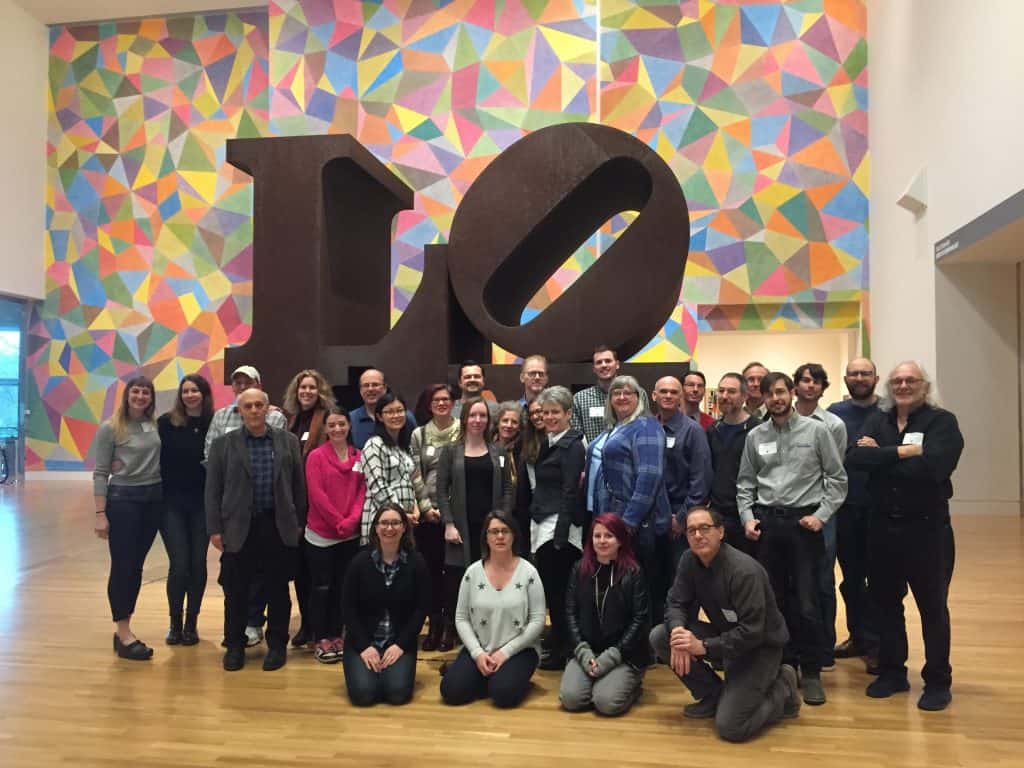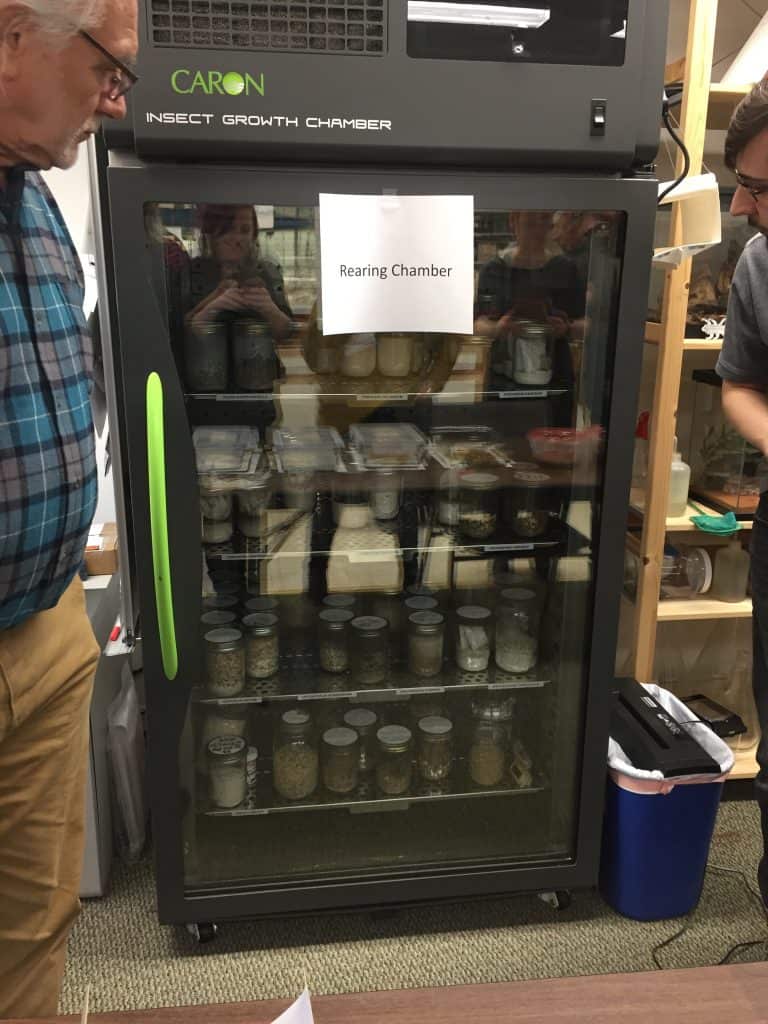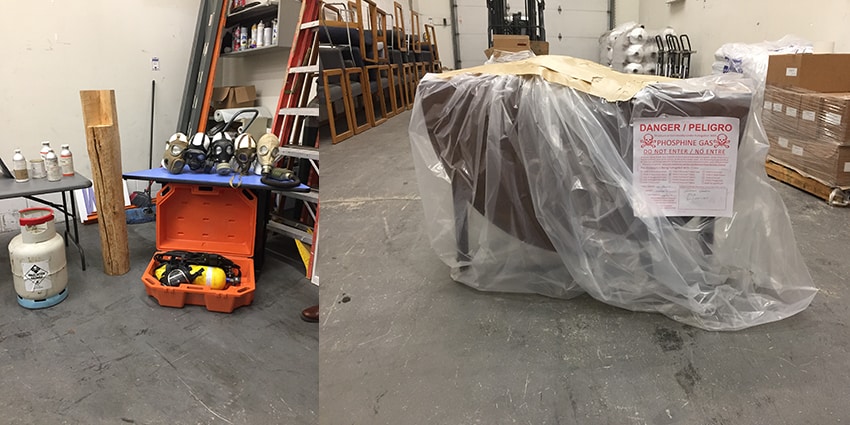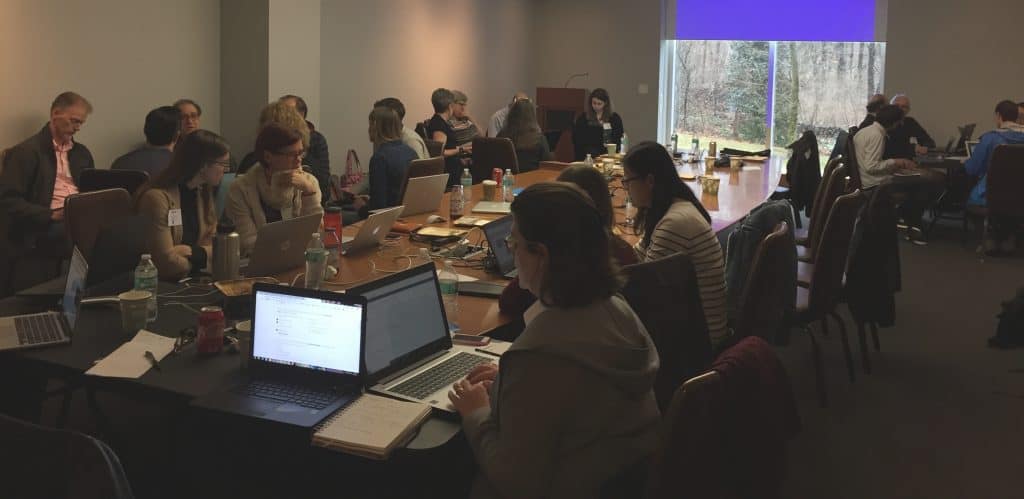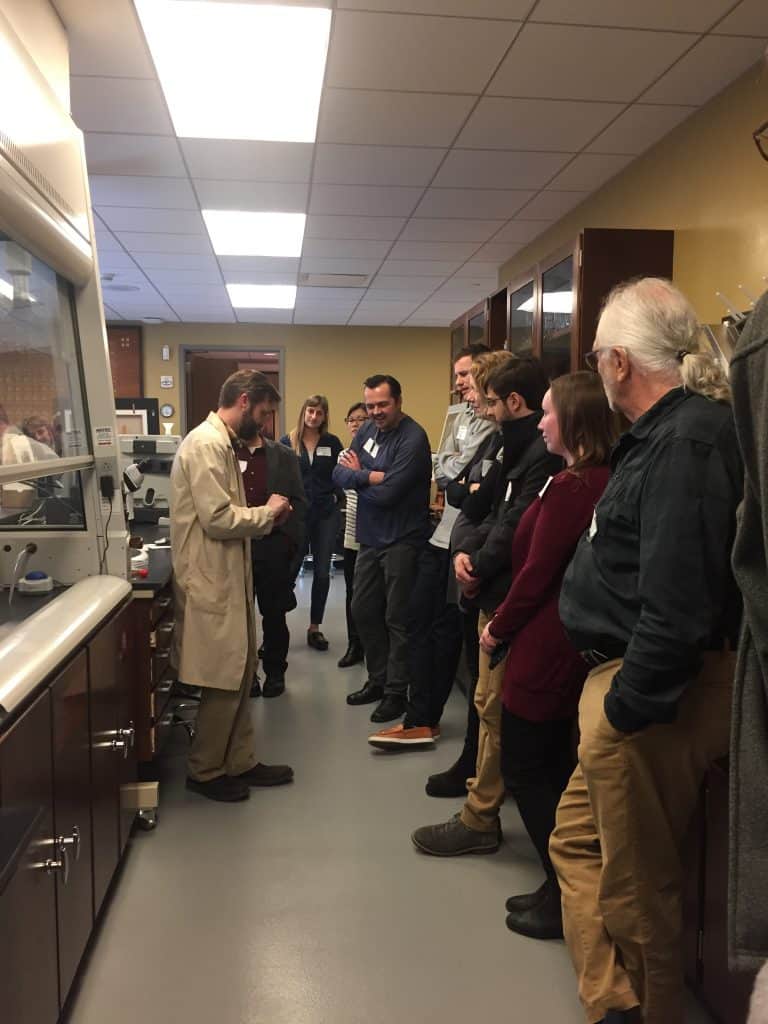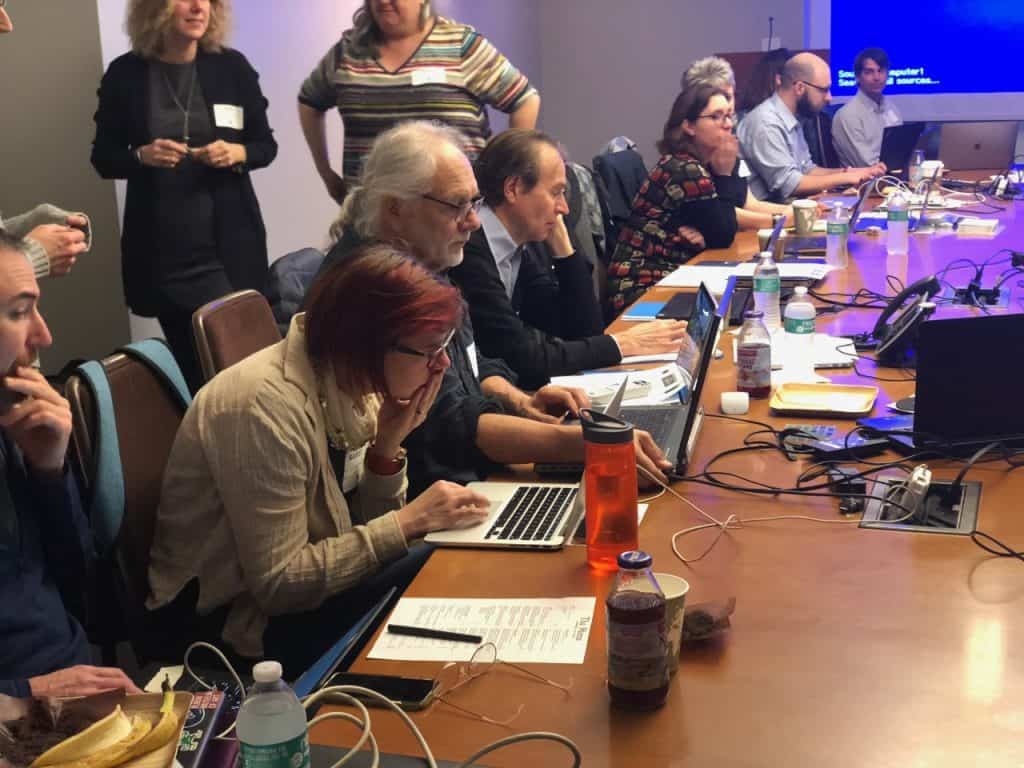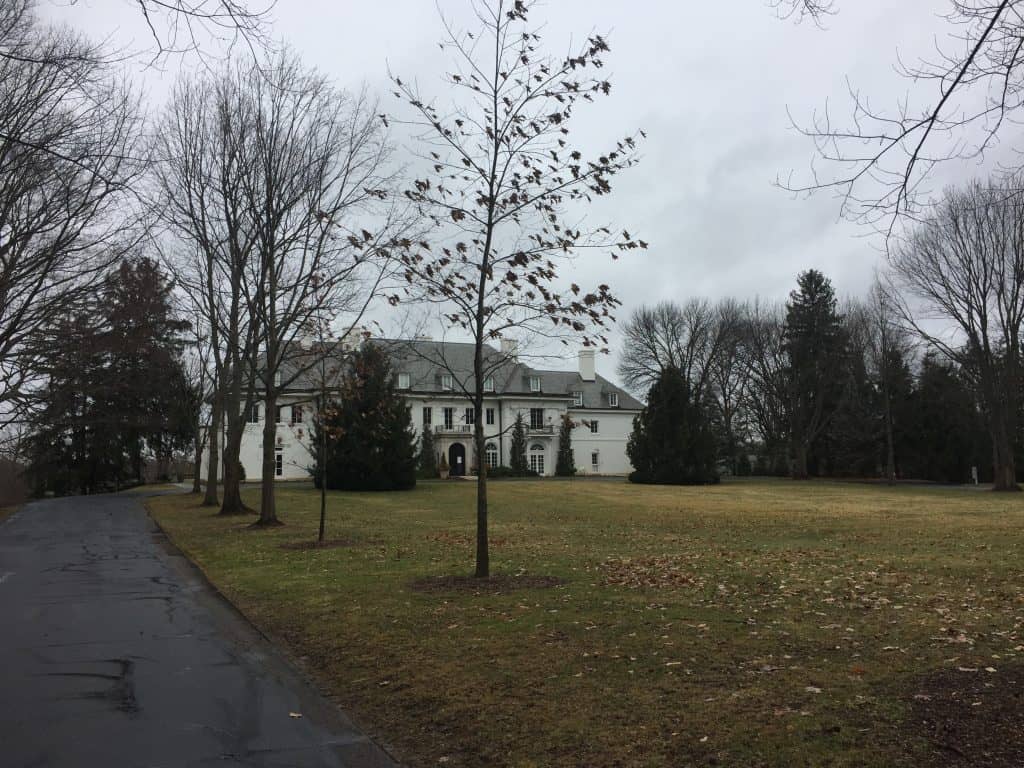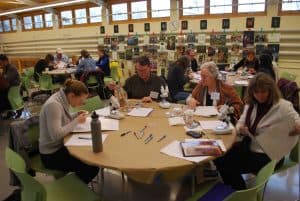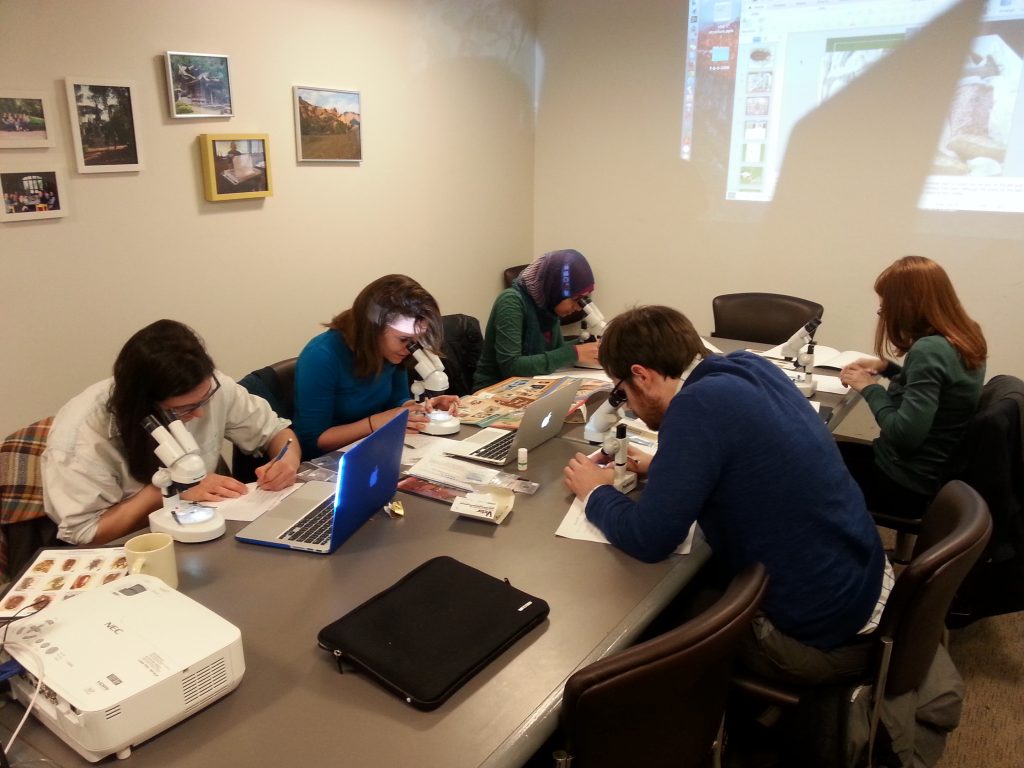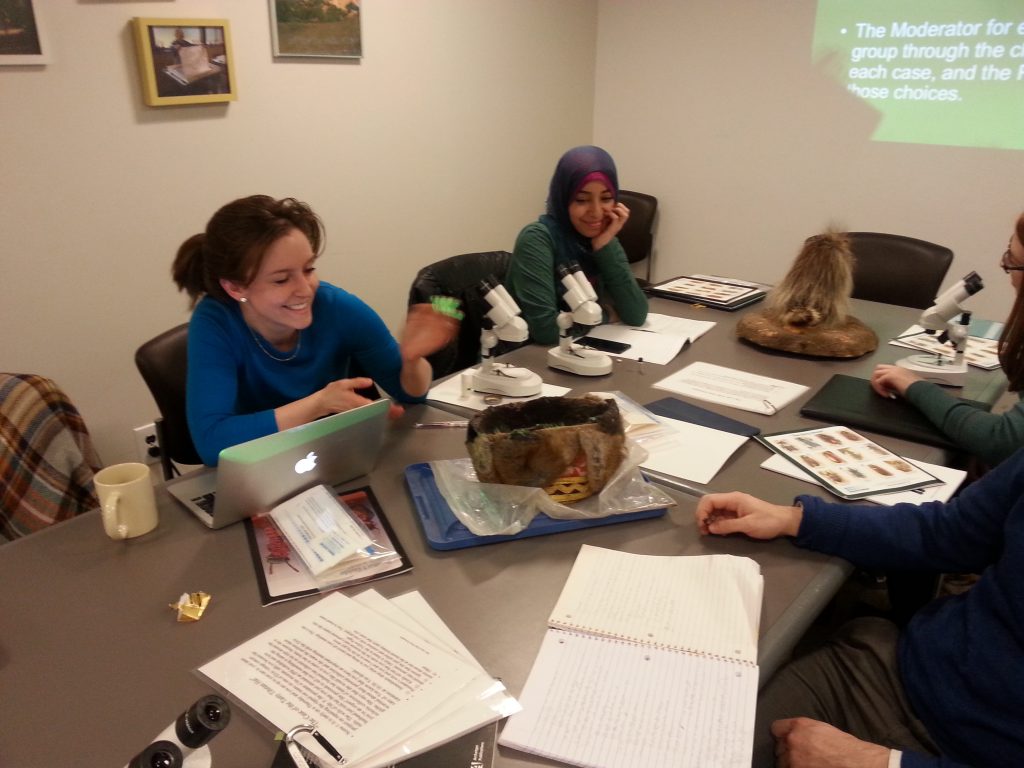Coming to Indianapolis is my second time participating in the IPM-WG, my first was at Winterthur in 2017. I’m very excited to be back!
Day one took us out to Insects Limited hosted by Pat Kelley. We had a very busy day starting with a tour of lab including the insect colony rearing, trap testing areas and pheromone extraction and synthesis. Then followed some really exciting talks, including (but not exclusively) the use of sniffer dogs to locate active infestations of biscuit beetles, the use of pesticide netting and some exciting news on SightTrap development.
We then had a presentation on fumigation, which as a Brit and therefore not at all familiar, scared me slightly! Being a geological collections curator I am excited about the potential of anoxic enclosures as freezing treatments aren’t an option when our materials associated with collections need intervention.
Day two took us out to Newfields, the Indianapolis Museum of Art (IMA) which was to be our base for the remainder of the working group. After updates from the UK and European groups and some discussion on the priorities to get on with this year, we got to work.
Groups formed doing a variety of tasks; including updating pest sheets and ensuring that the website works properly and finding gaps in resources. A library group has formed, checking that the website is inclusive for a whole host of cultural institutions. The survey group has worked hard to get the survey on pest trends closer to publication (watch this space!).
In the afternoon we had tours of the facilities at Newfields. Greg Smith showed us the most beautiful lab I have ever seen; the Conservation Science Centre where he does some amazing work using chemistry to learn a whole host of things about the art in the collections.
Then we were shown one of the collections space with a whole range of amazing objects. I love having the opportunity to see collections storage at other institutions, as a Paleontologist I’ve never been into an art museum’s stores before. Sadly (and understandably we weren’t allowed to take photos, but trust me the art and design objects were amazing).
Following the tours we had another work session, continuing what we were doing previously; I’m excited to see the results of the group working on how to create buy in into IPM via prevention and the results of the work of the rodent group.
Day three has us back at Newfields, and back to our smaller working groups. The remaining groups were working on exploring the possibility of translations of the website, initially into Spanish. The solutions group are working on some easy workflow diagrams for treatment decision making which should be super!
Just before lunch we went on a tour of the Lilly house, a beautiful house which is part of the Newfields site. After lunch we had a great talk about remote sensor technology in rodent traps at the American Museum of Natural History (AMNH) in New York and how social media has been used within this group. We then continued with the working groups before we wrapped up for another year.
Many thanks to Insects Limited and the IMA for hosting a wonderful meeting, and many thanks to all the participants for welcoming me back to the group where we got loads done!
Zoë Hughes
Curator of Fossil Invertebrates (Brachiopods and Cephalopods), Department of Earth Sciences, Natural History Museum, London.

